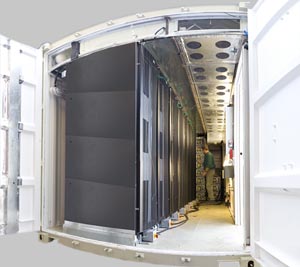Oz could reach top 20 of supercomputers

Australia's Pawsey Centre has reached number 87 on the top 500 list of supercomputers worldwide, but since it's still being built, its ranking could rise a lot higher, according to the company charged with the centre creation, iVEC.

POD in-situ at iVEC@Murdoch(Credit: iVEC)
iVEC, an unincorporated joint venture between CSIRO and the four public WA universities with funding from the State Government, recently bought a HP Performance Optimised Datacentre (POD) to house at Murdoch University. Although it's not turned on yet, the POD has reached number 87 on the who's who of supercomputers.
The POD is a blur of statistics, boasting an 87.20 teraflop system using HP ProLiant Blade servers with 1600 Intel Xeon 5600 processors, totalling 9600 cores and 500 terabytes of high-performance storage, connected via 4x infiniband.
It is, however, only first stage of an $80 million project to build an even faster supercomputer. The Murdoch facility will be joined by additional computing power at the University of Western Australia and another facility in Kensington Perth. The three facilities working in concert via a 10Gbps fibre link will form the Pawsey Centre.
The computing hardware for the second and third facilities has yet to be sourced. It will be bought through CSIRO procurement.
Once all three are online, scheduled to occur in 2013, the Pawsey Centre will be 15 times faster than the POD is on its own. That could well boost the facility onto the top 20 of the global super computer list, if not higher, according to iVEC spokesperson David Satterthwaite.
Associate director of the Murdoch facility, Professor Matthew Bellgard, said the facilities would be a boon for number heavy sciences.
"The facility represents a major advancement in computational research in Australia where scientific discovery is largely dependent on the ability to process masses of information as quickly as possible," he said. "What has been recognised by the ranking is the fact that the supercomputer will enable processing of data at speeds which we have not previously encountered."
Also in the top 100, at number 51, was the National Computational Infrastructure Facility in Canberra. A CSIRO supercomputer and the Bureau of Meterology's new supercomputer came in within the next 100.
CSIRO's supercomputer has also received kudos for being Australia's greenest supercomputer, ranking eleventh on a list of the world's 500 fastest and most energy efficient supercomputers, otherwise known as the Green500 list.
CSIRO has put together a video about what it can do with its supercomputer.